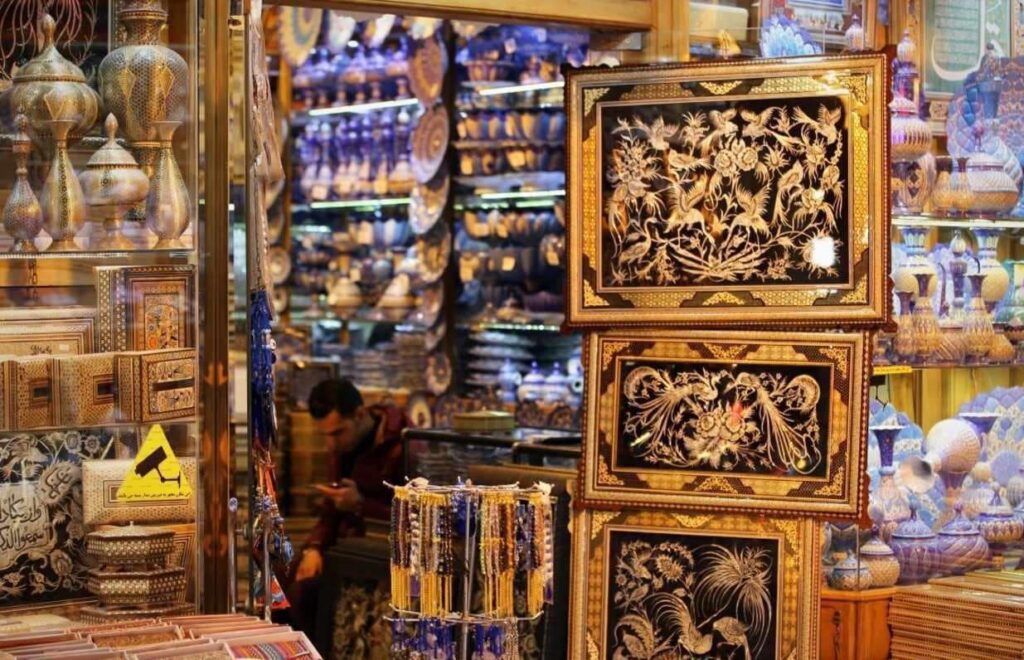Introduction to Isfahan Bazaar
Isfahan, one of the oldest cities in Persia, is the best place to visit and enjoy Persian Islamic art and architecture. Isfahan Bazaar, as one of the specific bazaars in Persia, is located on the edge of Naqsh-e Jahan Square. The bazaar was built during the Safavid and Qajar rule and at the same time with the emergence of caravanserais, bazaars, and magnificent mosques. With its unique architecture, the bazaar has created a space where you can see the most traditional crafts and artworks besides attraction images that you have not seen anywhere else. Isfahan Bazaar is not limited to Naqsh-e Jahan Square and has spread throughout the city. The bazaar extends to the Grand Mosque and the Arabs’ Bazaar; since the bazaar is close to the Nizam Al-Molk dome and the Grand Mosque, it is also called Nizamiyeh or Nizam Al-Mulk bazaar.
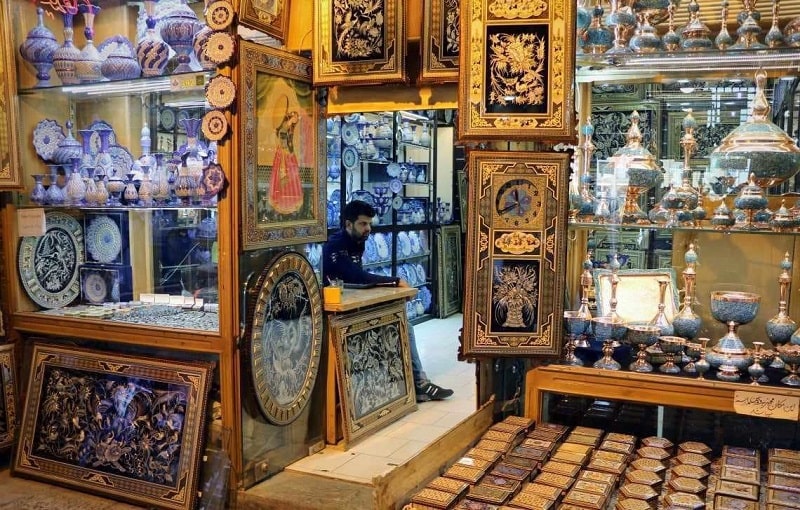
Products of Isfahan Bazaar
Such a bazaar is phenomenal with booths and shophouses that have been selling ancient goods for 400 years, so take a brisk walk and enjoy the small and picturesque shops, cafes, and restaurants. The best products you can purchase are copper utensils, as well as utensils with artworks and engravings drawn on them.
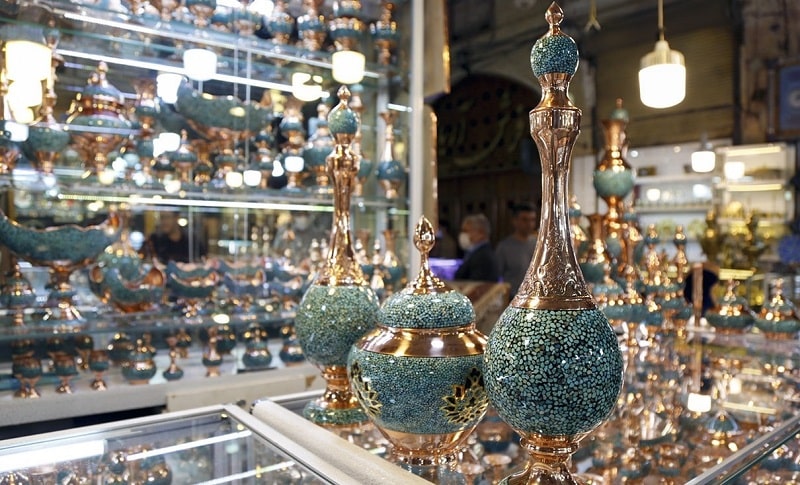
Architecture of Isfahan Grand Bazaar
There are several entrances to the bazaar; the most famous one is the Qeyssariyeh bazaar on the north side of Naqsh-e Jahan Square, which embraces several mosques, baths, and a large school in its heart. Isfahan Bazaar, same as other historical and significant bazaars, has different sections and is composed of main lines (Rasteh), Timcheh, Charsooq (Charsoo), Caravanserai, Mosque, and Bathhouse; the most important of Rasteh are usually goldsmiths, blacksmiths, gunsmiths, shoemakers. Etc. The brick facade inside the bazaar, the arched windows with wooden frames, the charms of Safavid era art and architecture make the environment inside the bazaar captivate you for hours. The skylights on the ceiling not only illuminate the inside but also allow air to flow. One of the architectural wonders is its construction due to the narrow corridors, which makes the air inside the bazaar cooler than the air outside in summer, although, in winter, it does the opposite and keeps the temperature pleasant. The perfect architecture of Esfahan Bazaar has caused dust and severe storms to have no way in it, having acted as a haven.
Isfahan Bazaar is composed of different famous sections with unique names and features:
The portico of Qeyssariyeh
One of the prominent elements of Isfahan Bazaar is the portico of Qeyssariyeh (Sar Dar-e Qeyssarieh). The attractive portico is one of the buildings of the Safavid era, which used to have three floors, but today only two of them remain. Of course, the passage of time and various factors have caused some parts’ destruction. Qeyssariyeh Gate dazzles the eyes of every spectator with its tiled decorations, Moqarnas, and paintings of Shah Abbas during hunting and battle drawn by Reza Abbasi.

Qeyssariyeh Bazaar
Qeyssariyeh Bazaar, as one of the principal points in the historical context of Esfahan, is known as the Bazaar-e Bozorg, Bazaar-e Shahi, Bazaar-e Soltani as well. The bazaar was one of the most prosperous ones in Persia during the Safavid period that was considered a trading center for precious fabrics.
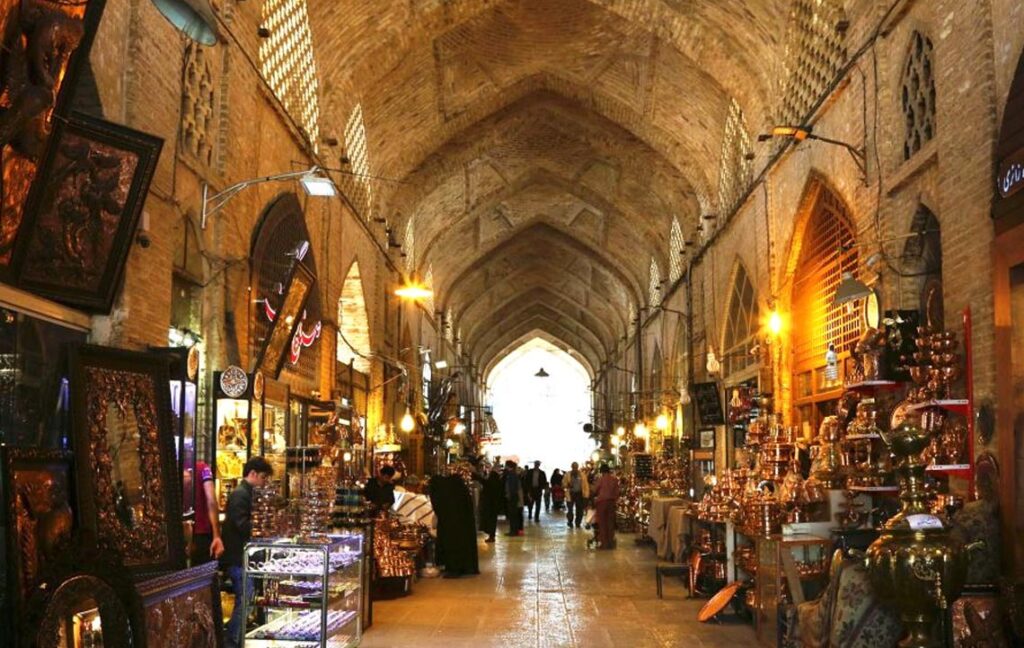
Charsoo-y Qeyssariyeh
At Charsoo of Qeyssariyeh, raise your head to be attracted by the ceiling architecture, its unique design, and its artistic construction. The ceiling decorations with geometric shapes and delicate patterns are so spectacular.
Shahi Distillery (Osarkhaneh Shahi)
The Shahi distillery used to be a place for oiling herbal seeds. The place was enormous during the Safavid era, but unfortunately, only a small part remains today. The roof of the Osarkhaneh Shahi is dome-shaped to keep the oils inside cool.
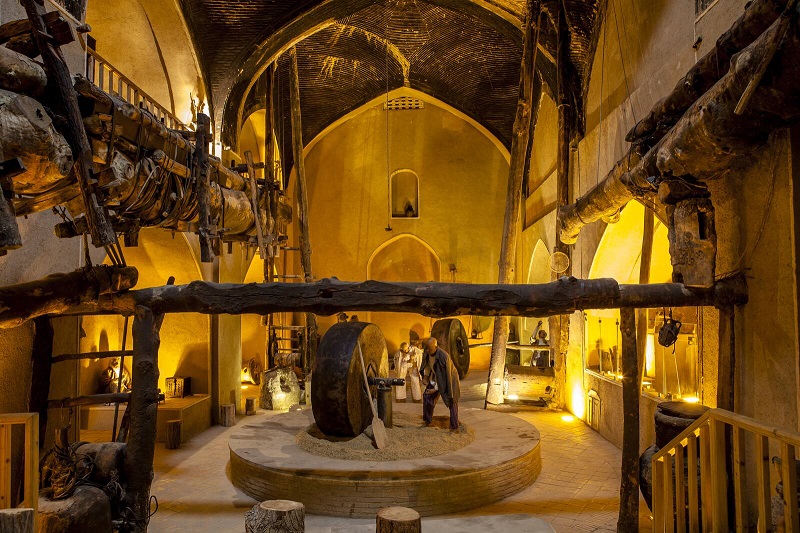
Timcheh Malek Al-Tojjar, a masterpiece of Isfahani artists
One of the distinctive parts of the stunning bazaar of Isfahan that its design and construction allow you to see it in three dimensions, thus, its architectural superiority is especially evident.
Goldsmith’s bazaar (Bazaar-e Zargar ha); Gold and Jewelry
In the heart of Isfahan’s Grand Bazaar, there is a place for buying and selling all kinds of jewelry, whose astonishing decorations and spectacular architecture dazzle the eye.
Charsoo-y Chitsaz ha; The second Charsoo of Qeyssariyeh
Another well-known part of Isfahan Bazaar for its beauty by the unique art of architecture and design is the Chitsazes’ Charsoo. It is also called the second Charsoo of Qeyssariyeh since the architectural style of these Charsoos is similar. You can also find the best handicrafts and traditional artworks of Isfahan there.
